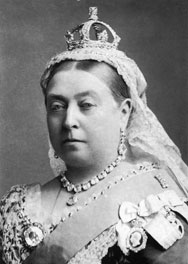Victoria with Windmill and Horse
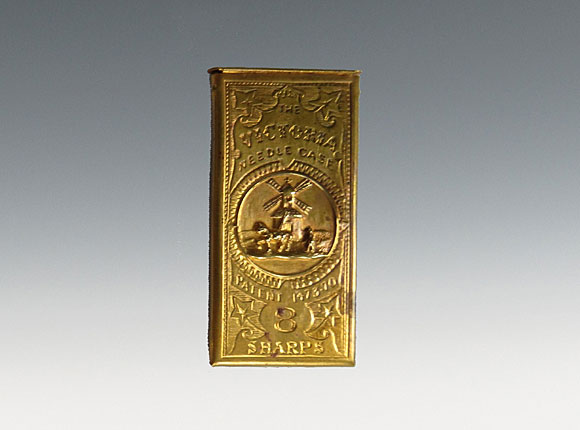
Needle Case front (photographs courtesty of Christina Bertrand)
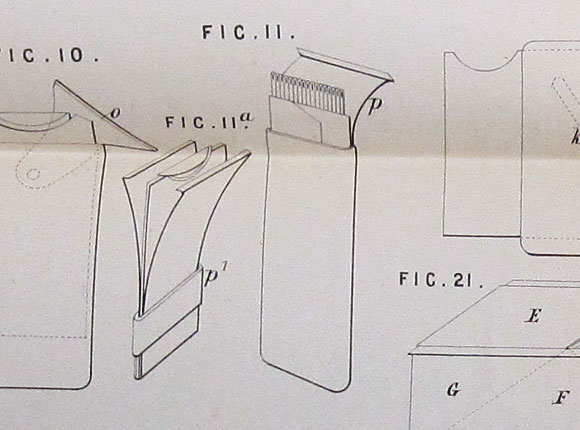
Patent (patent #1473 is stamped on the needle case)
Design Details
Needle Case Type: |
Flat-Names |
Patent/Registered to: |
William Avery - Redditch Manufacturer |
Patent/Design Representation #: |
Mechanical Patent #:1473 (Fig. 11) |
Patent/Design Registration Date: |
May 21, 1870 |
Location of Patent/Design Registration: |
British Library - Business and Intellectual Property Centre - London
|
Reference #: |
1870-1473 |
Dimensions: |
2.0 x 4.3 |
Material: |
Brass |
Name Variations: |
Baggallays, Westall & Spence - London |
Other Variations: |
Florence |
Additional Photographs
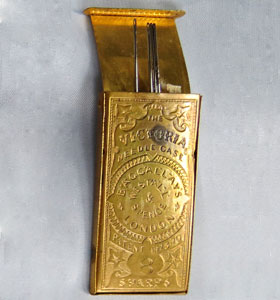
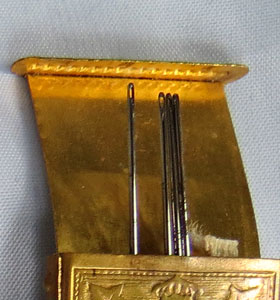
Back open and top detail
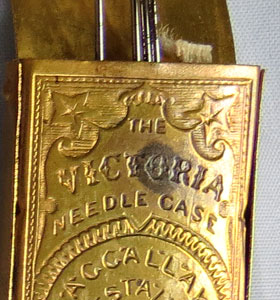
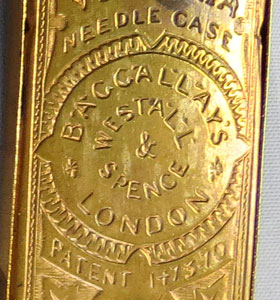
Back details
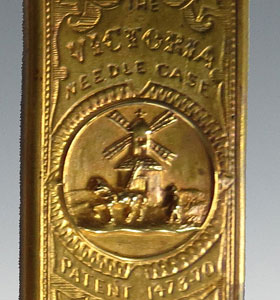
Front detail with patent number
Facts
Queen Victoria was born in 1819. She was the daughter of Prince Edward (the fourth son of King George III of the UK) and the German
Princess Victoria of Saxe-Coburg. Her father died when she was 1 year old and Victoria inherited the throne at age 18 after her father’s
three elder brothers had died without an heir Here is a painting of Queen Victoria on her coronation day.
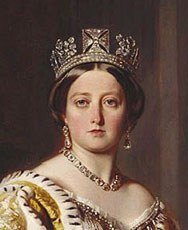
History
In 1839 Queen Victoria proposed to and shortly thereafter, in early 1840 at age 21, married her German cousin Prince Albert of Saxe-Coburg.
Within months of their marriage she became pregnant and their first child Victoria was born at the end of the year. Queen Victoria and
Albert, who was known as the Queen's Consort, had eight aditional children: Albert Edward, Prince of Wales (1841), Alice (1843), Alfred (1844),
Helena (1846), Louise (1848), Arthur (1850), Leopold (1853) and Beatrice (1857). When Albert died of typhoid fever in 1861, Victoria
went into mourning and wore black for the remainder of her life.
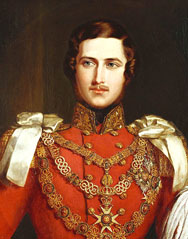
Miscellaneous
Queen Victoria’s reign lasted 63 years making her the longest reigning British monarch and the longest ruling female monarch in
history. The period in which she reigned became known as the Victorian Era. During this time the British Empire was at its peak and
was renowned for its industry and culture. Queen Victoria died in 1901, three years after William Avery. Avery, who lived from
1832-1899, was a true product of the Victorian period. After the queen's death, her eldest son became King Edward VII. The
photograph below shows Queen Victoria in her later years.
